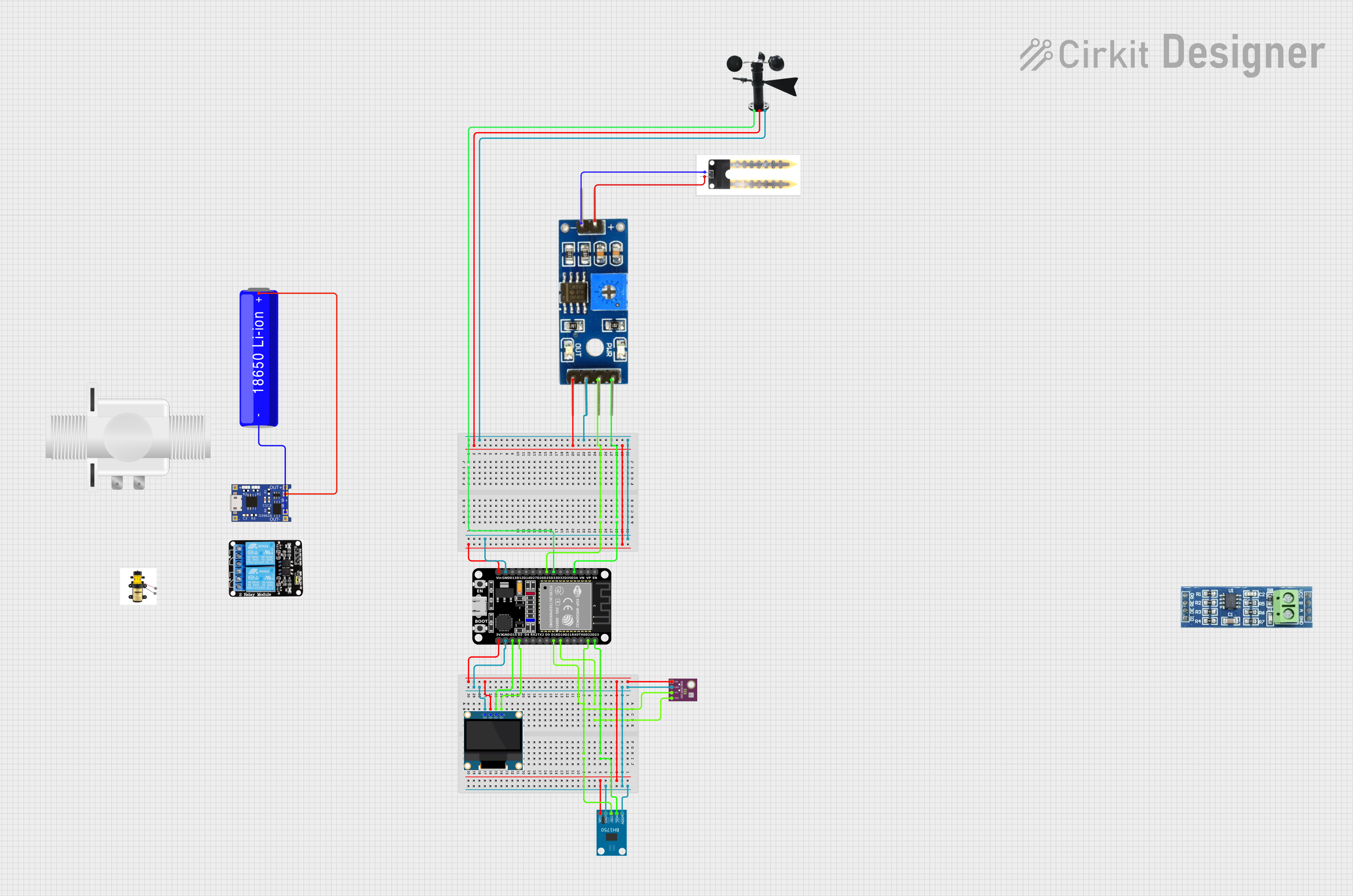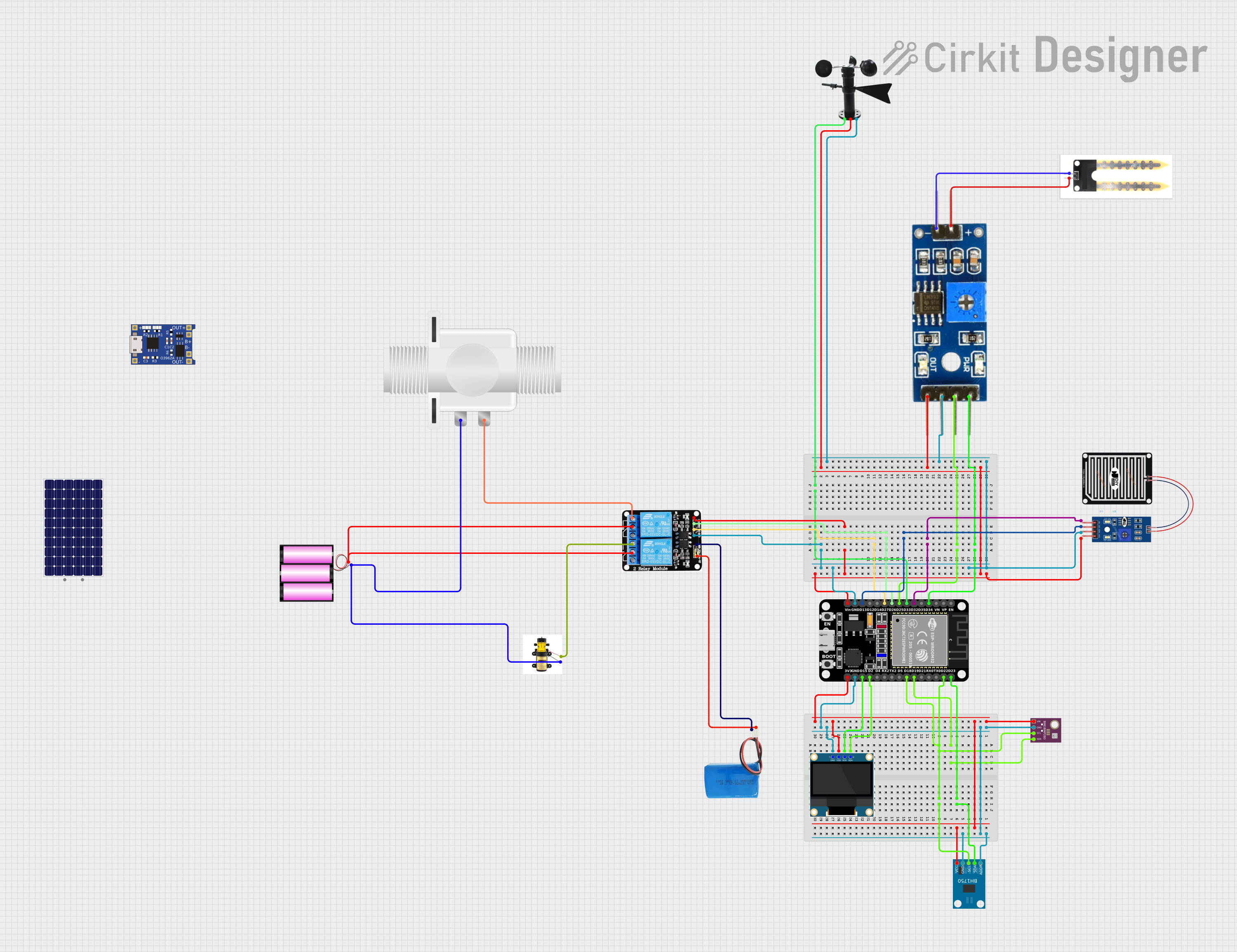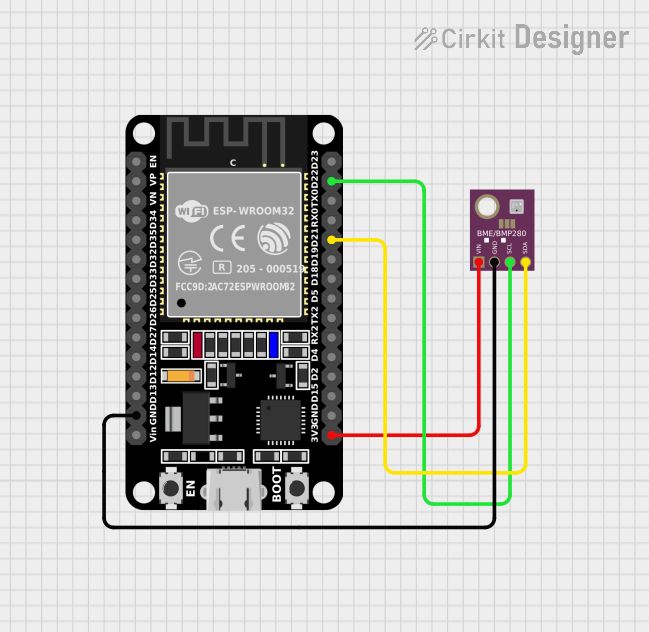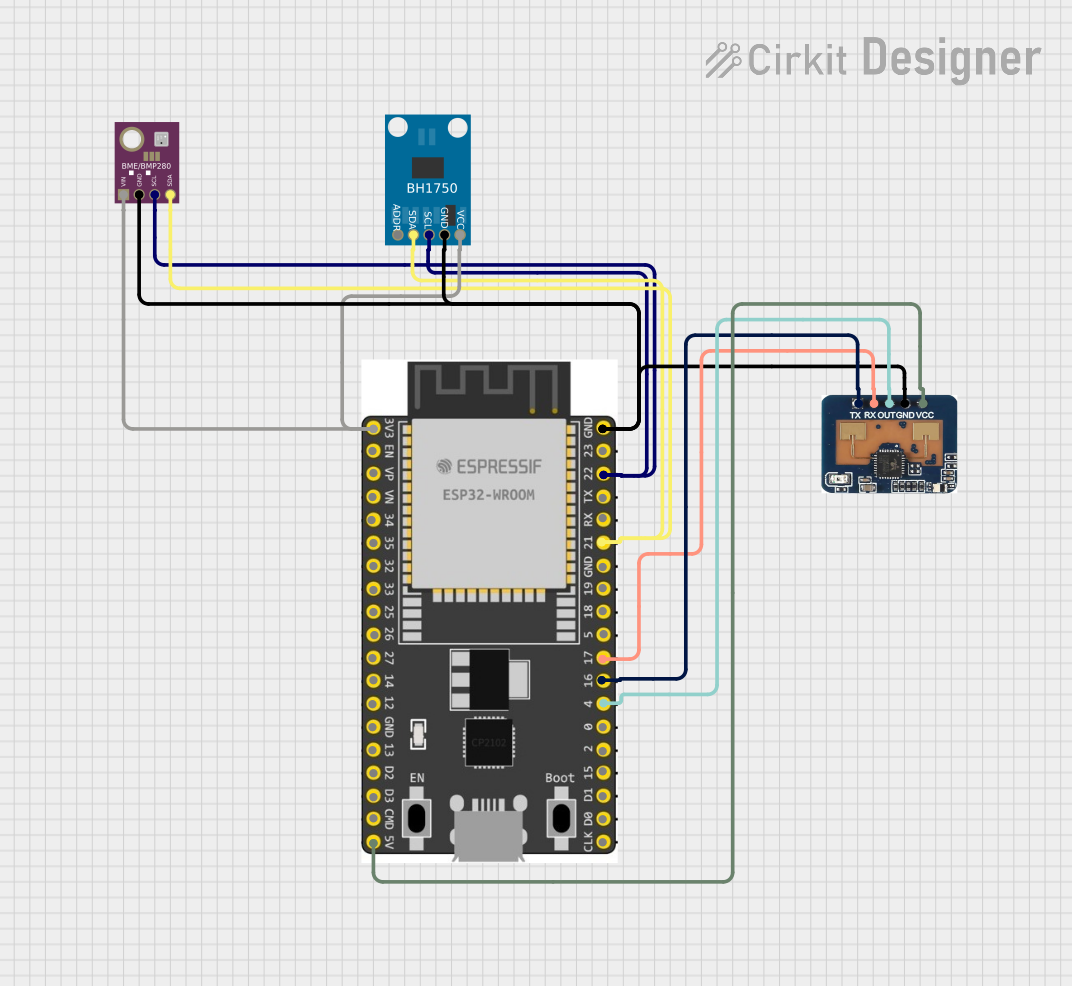
How to Use BME280: Examples, Pinouts, and Specs

 Design with BME280 in Cirkit Designer
Design with BME280 in Cirkit DesignerIntroduction
The BME280 is a high-precision digital sensor manufactured by Laskakit (Part ID: Senzor Tem, Hum, Press). It is designed to measure temperature, humidity, and atmospheric pressure. This versatile sensor is widely used in applications such as weather stations, IoT devices, and environmental monitoring systems. Its compact size, low power consumption, and high accuracy make it an ideal choice for both hobbyists and professionals.
Explore Projects Built with BME280

 Open Project in Cirkit Designer
Open Project in Cirkit Designer
 Open Project in Cirkit Designer
Open Project in Cirkit Designer
 Open Project in Cirkit Designer
Open Project in Cirkit Designer
 Open Project in Cirkit Designer
Open Project in Cirkit DesignerExplore Projects Built with BME280

 Open Project in Cirkit Designer
Open Project in Cirkit Designer
 Open Project in Cirkit Designer
Open Project in Cirkit Designer
 Open Project in Cirkit Designer
Open Project in Cirkit Designer
 Open Project in Cirkit Designer
Open Project in Cirkit DesignerCommon Applications:
- Weather monitoring systems
- Internet of Things (IoT) devices
- Altitude measurement in drones
- HVAC (Heating, Ventilation, and Air Conditioning) systems
- Environmental data logging
Technical Specifications
Key Technical Details:
| Parameter | Value |
|---|---|
| Supply Voltage | 1.8V to 3.6V |
| Interface | I2C (up to 3.4 MHz) and SPI (up to 10 MHz) |
| Temperature Range | -40°C to +85°C |
| Temperature Accuracy | ±1.0°C |
| Humidity Range | 0% to 100% RH |
| Humidity Accuracy | ±3% RH |
| Pressure Range | 300 hPa to 1100 hPa |
| Pressure Accuracy | ±1 hPa |
| Power Consumption | 3.6 µA (at 1 Hz sampling) |
| Dimensions | 2.5 mm x 2.5 mm x 0.93 mm |
Pin Configuration and Descriptions:
The BME280 module typically comes with 4 or 6 pins, depending on the breakout board design. Below is the pinout for a common 4-pin configuration:
| Pin Name | Pin Number | Description |
|---|---|---|
| VCC | 1 | Power supply (1.8V to 3.6V) |
| GND | 2 | Ground |
| SCL | 3 | Serial Clock Line for I2C or SPI SCK |
| SDA | 4 | Serial Data Line for I2C or SPI MOSI |
For 6-pin configurations, additional pins may include:
| Pin Name | Pin Number | Description |
|---|---|---|
| CS | 5 | Chip Select for SPI (active low) |
| SDO | 6 | Serial Data Out for SPI |
Usage Instructions
How to Use the BME280 in a Circuit:
- Power the Sensor: Connect the VCC pin to a 3.3V power source (or 5V if the breakout board includes a voltage regulator) and GND to ground.
- Choose Communication Protocol:
- For I2C, connect the SCL and SDA pins to the corresponding I2C pins on your microcontroller.
- For SPI, connect SCK, MOSI, MISO, and CS pins as required.
- Pull-Up Resistors: If using I2C, ensure pull-up resistors (typically 4.7kΩ) are connected to the SCL and SDA lines.
- Address Selection: The I2C address of the BME280 can be configured as
0x76or0x77by connecting the SDO pin to GND or VCC, respectively.
Example: Connecting to an Arduino UNO
Below is an example of how to connect the BME280 to an Arduino UNO using the I2C interface:
- VCC → 3.3V
- GND → GND
- SCL → A5 (Arduino I2C Clock)
- SDA → A4 (Arduino I2C Data)
Arduino Code Example:
The following code demonstrates how to read temperature, humidity, and pressure data from the BME280 using the Adafruit BME280 library:
#include <Wire.h>
#include <Adafruit_Sensor.h>
#include <Adafruit_BME280.h>
// Create an instance of the BME280 sensor
Adafruit_BME280 bme;
// Define I2C address (default is 0x76, change to 0x77 if needed)
#define BME280_I2C_ADDRESS 0x76
void setup() {
Serial.begin(9600);
while (!Serial); // Wait for serial monitor to open
// Initialize the BME280 sensor
if (!bme.begin(BME280_I2C_ADDRESS)) {
Serial.println("Could not find a valid BME280 sensor, check wiring!");
while (1);
}
Serial.println("BME280 sensor initialized successfully!");
}
void loop() {
// Read and print temperature, humidity, and pressure
Serial.print("Temperature: ");
Serial.print(bme.readTemperature());
Serial.println(" °C");
Serial.print("Humidity: ");
Serial.print(bme.readHumidity());
Serial.println(" %");
Serial.print("Pressure: ");
Serial.print(bme.readPressure() / 100.0F); // Convert Pa to hPa
Serial.println(" hPa");
Serial.println(); // Add a blank line for readability
delay(2000); // Wait 2 seconds before the next reading
}
Important Considerations:
- Voltage Levels: Ensure the sensor operates within its voltage range. If using a 5V microcontroller, confirm the breakout board includes a voltage regulator and level shifters.
- I2C Pull-Up Resistors: If multiple I2C devices are connected, ensure only one set of pull-up resistors is active.
- Environmental Factors: Avoid exposing the sensor to water or dust, as this may affect its accuracy.
Troubleshooting and FAQs
Common Issues:
Sensor Not Detected:
- Cause: Incorrect wiring or I2C address mismatch.
- Solution: Double-check connections and ensure the correct I2C address is used in the code.
Inaccurate Readings:
- Cause: Environmental interference or improper calibration.
- Solution: Place the sensor in a stable environment and avoid heat sources. Use calibration if necessary.
Communication Errors:
- Cause: Missing pull-up resistors or incorrect protocol configuration.
- Solution: Verify pull-up resistors are in place for I2C. For SPI, ensure proper pin connections.
FAQs:
Q: Can the BME280 measure altitude?
- A: Yes, altitude can be calculated using the pressure readings and a reference sea-level pressure.
Q: What is the difference between BME280 and BMP280?
- A: The BME280 measures temperature, humidity, and pressure, while the BMP280 only measures temperature and pressure.
Q: Can I use the BME280 with a 5V microcontroller?
- A: Yes, but only if the breakout board includes a voltage regulator and level shifters. Otherwise, use a logic level converter.
Q: How do I change the I2C address?
- A: Connect the SDO pin to GND for
0x76or to VCC for0x77.
- A: Connect the SDO pin to GND for
By following this documentation, you can effectively integrate the BME280 sensor into your projects for accurate environmental monitoring.